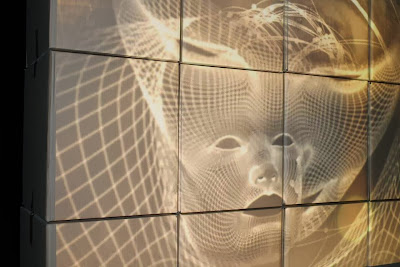8th & 9th of November, 2013
Embrace Arts – Richard Attenborough Centre, Leicester University.
A new installation by multi media composer, Andrew Williams developed as a part of his role as Leverhulme Artist in Residence at the University’s Space Research Centre.
 |
| IMAGE: Dawn Chorus |
Trajectory uses multi screen video projections and still images within a unique multi speaker audio installation composed using sound/data from space recorded by space craft, satellites and long wave radio. Continuously developing over two days it will present an artists perspective of our Earth, space, current research and future challenges for humanity.
"The earth is the cradle of humankind, but one cannot live in the cradle forever."
Konstantin Tsiolkovsky, 1895
Trajectory also includes interactive talks, debate & discussion, demonstrations and informal lectures exploring aspects of the work undertaken by the University’s Space Research Centre.
Trajectory includes an opportunity to experience and explore City Scan developed by Dr Roland Leigh: A pollution radar showing levels of air pollution across a City viewed in 3D using a gaming headset.
Events during Trajectory
3.00pm to 4.00pm on Friday 8th of November.
An informal lecture presentation by Dr Nigel Bannister:
A History of Space Craft Trajectory.
An entertaining lecture exploring the journey of understanding: from the apple falling on Isaac Newtons’ head to a space craft arriving at Jupiter. Featuring a live simulation of the European Space Agency mission to Jupiter (JUICE -Jupiter Icy Moons Explorer) starting from Earth and arriving at Jupiter within the space of the presentation.
6.00pm – 8.00pm on Friday the 8th of November.
Trajectory
The Future of Space Research?
A chance to explore current space research, opportunities for artists and a potential future for humanity (what has space research ever done for us?) through discussion, installation art and informal presentations featuring (amongst others) Andrew Williams, Dr John Lees, Professor Alan Perkins, and Professor George Fraser (Space Research Director).
“Space is as infinite as we can imagine, and expanding this perspective is what adjusts humankind's focus on conquering our true enemies, the formidable foes: ignorance and limitation”.















